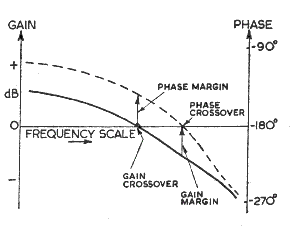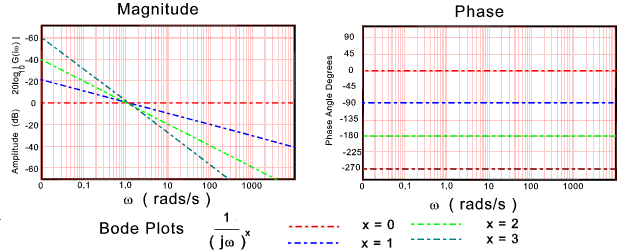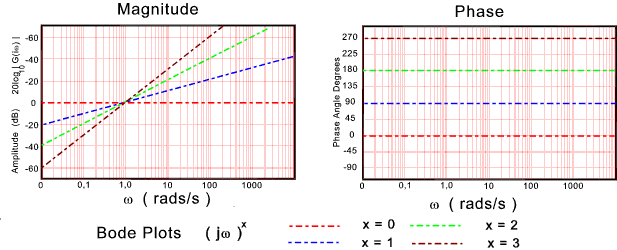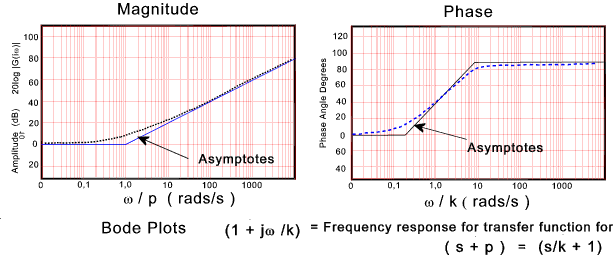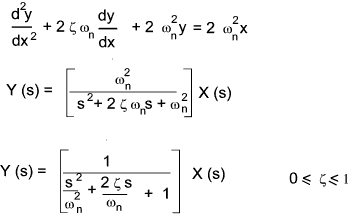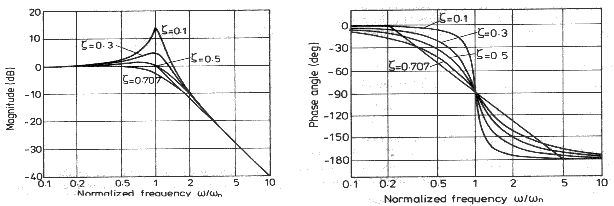Control Index
Bode Graphs
|
Bode graphs Bode graphs are representations of the magnitude and phase of
G(j*ω) (where the frequency vector ω
contains only positive frequencies). These consist of two graphs.
It is very easy to produce Bode plots by hand or by using proprietary software packages
such as Matlab. Links below show how Bode plots can be produced using Excel and using Mathcad.
The example plots below have been produced using Mathcad
The bode magnitude plots can be obtained by adding the bode magnitudes
(20Log10|G(iω)|) plots for the individual factors
i.e
Two relative stability indicators "Gain Margin" and "Phase Margin" are easily obtained
from Bode Plots. As 0 db corresponds to a magnitude of 1 the gain margin is the number of
db that |G(iω)| is below 0 db at the phase frequency
when the phase arg(G(iω)= 180o (Phase crossover). The phase margin
in the number of degrees arg(G(iω) is above -180o
frequency associated with a gain |G(iω)|= 1 (0 db) (Gain crossover)
A small number of typical bode plots are provided to indicate the various shapes. Relatively complicated bode plots can easily be produced by combining the plots below and adding the appropriate log values for constant products and divisors...
Many control systems are described by a general second order differential equation..
The resulting frequency response function and the associated normalised bode plots are show below
|
Sites & Links For Control Information
|
|
..Page is being constructed..
Control Index
